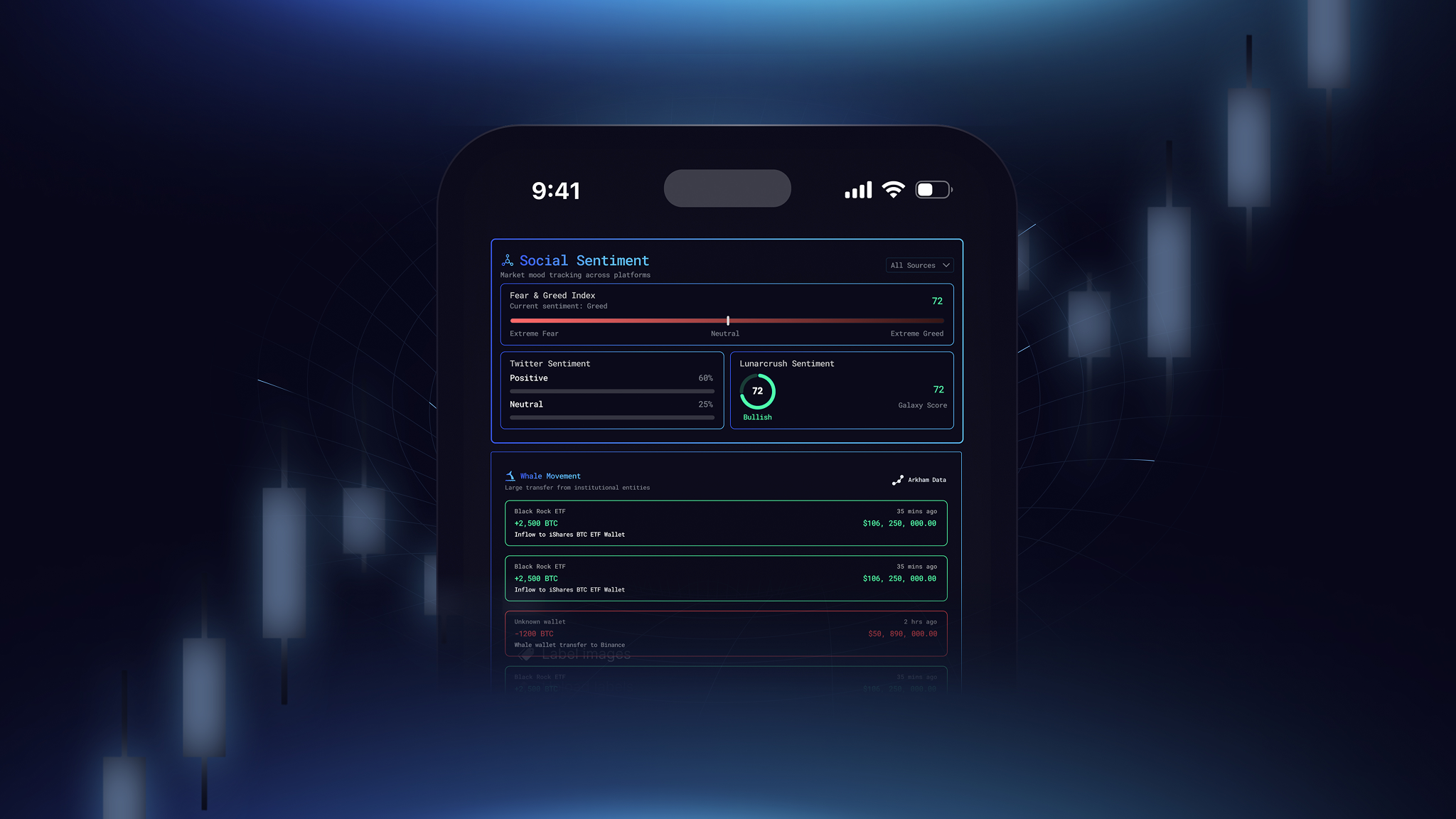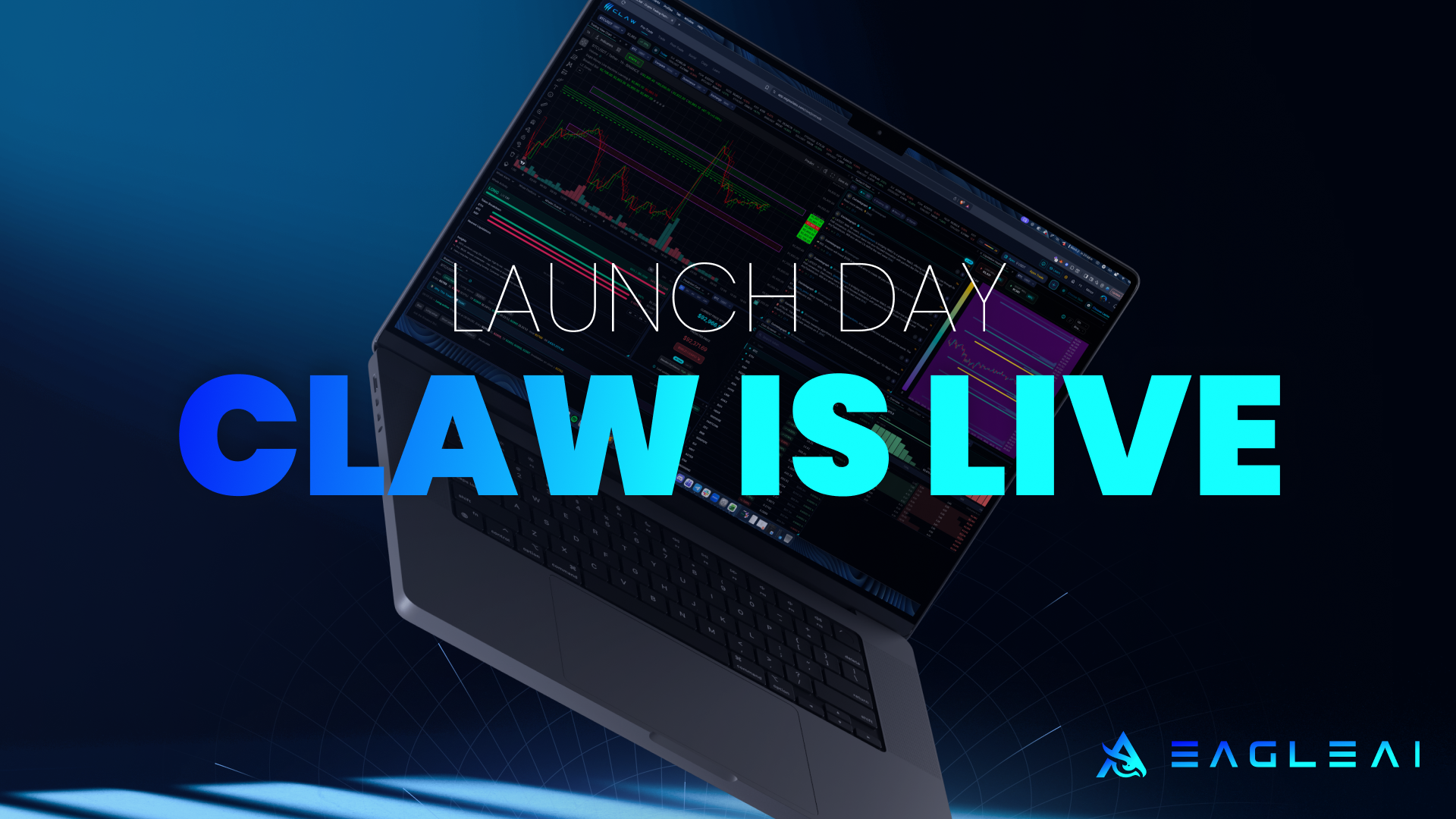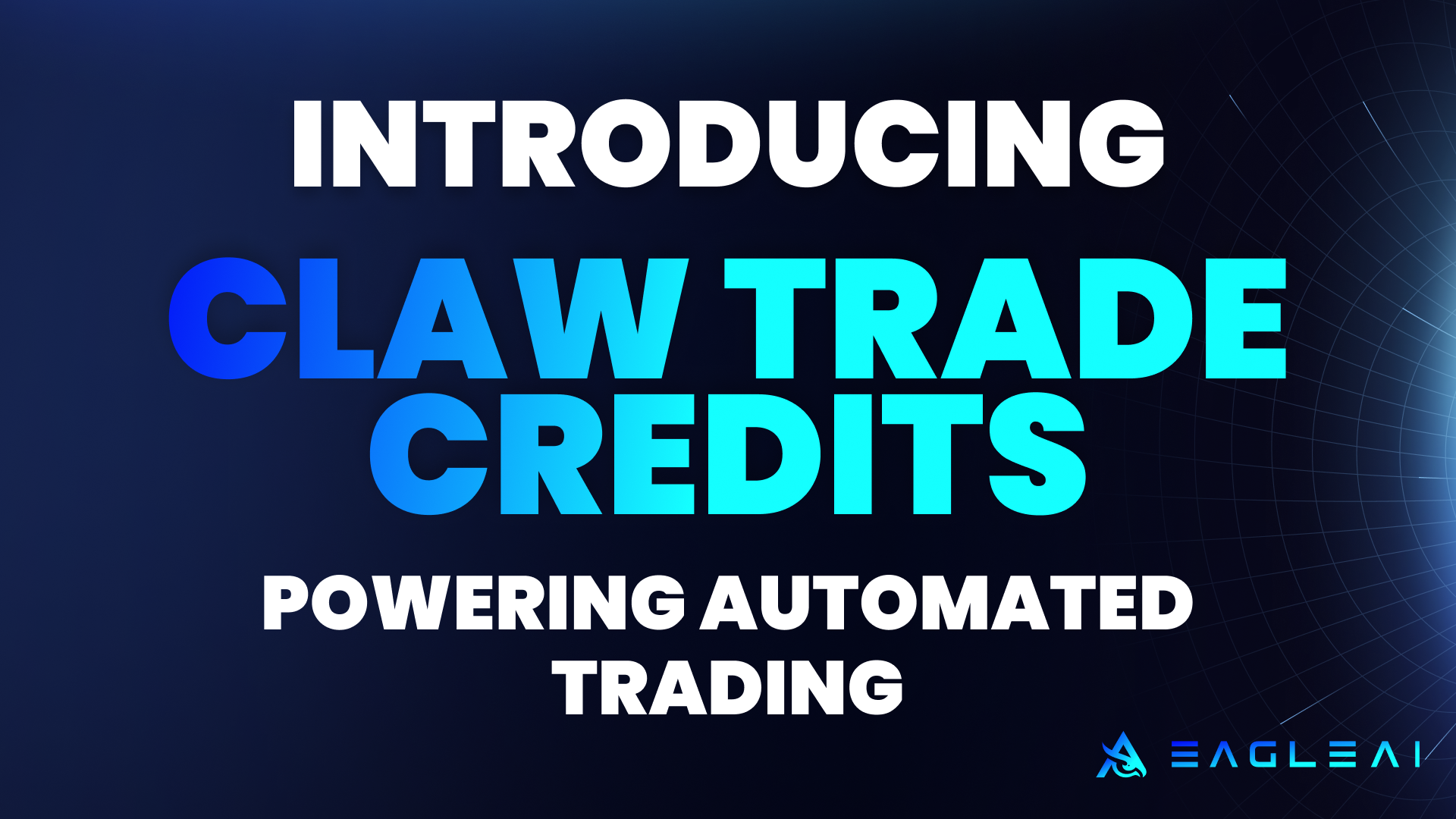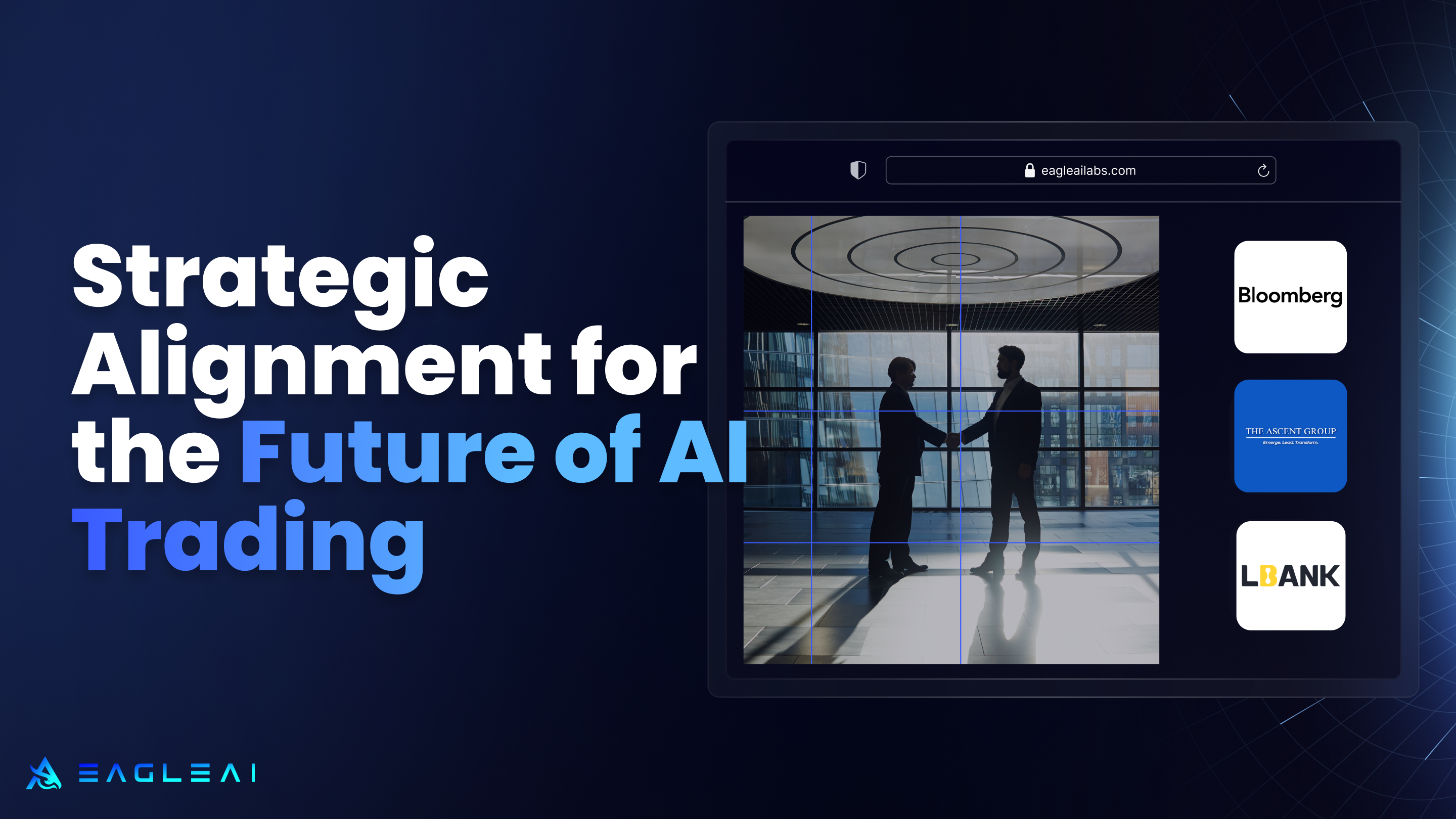The Convergence Of TradFi And DeFi: AI Tools Driving Financial Evolution
TradFi and DeFi are coming together thanks to new AI powered tools. This convergence is reshaping how financial systems operate, blending established institutions with decentralized protocols.

Low-code tools are going mainstream
Purus suspendisse a ornare non erat pellentesque arcu mi arcu eget tortor eu praesent curabitur porttitor ultrices sit sit amet purus urna enim eget. Habitant massa lectus tristique dictum lacus in bibendum. Velit ut viverra feugiat dui eu nisl sit massa viverra sed vitae nec sed. Nunc ornare consequat massa sagittis pellentesque tincidunt vel lacus integer risu.
- Vitae et erat tincidunt sed orci eget egestas facilisis amet ornare
- Sollicitudin integer velit aliquet viverra urna orci semper velit dolor sit amet
- Vitae quis ut luctus lobortis urna adipiscing bibendum
- Vitae quis ut luctus lobortis urna adipiscing bibendum
Multilingual NLP will grow
Mauris posuere arcu lectus congue. Sed eget semper mollis felis ante. Congue risus vulputate nunc porttitor dignissim cursus viverra quis. Condimentum nisl ut sed diam lacus sed. Cursus hac massa amet cursus diam. Consequat sodales non nulla ac id bibendum eu justo condimentum. Arcu elementum non suscipit amet vitae. Consectetur penatibus diam enim eget arcu et ut a congue arcu.

Combining supervised and unsupervised machine learning methods
Vitae vitae sollicitudin diam sed. Aliquam tellus libero a velit quam ut suscipit. Vitae adipiscing amet faucibus nec in ut. Tortor nulla aliquam commodo sit ultricies a nunc ultrices consectetur. Nibh magna arcu blandit quisque. In lorem sit turpis interdum facilisi.
- Dolor duis lorem enim eu turpis potenti nulla laoreet volutpat semper sed.
- Lorem a eget blandit ac neque amet amet non dapibus pulvinar.
- Pellentesque non integer ac id imperdiet blandit sit bibendum.
- Sit leo lorem elementum vitae faucibus quam feugiat hendrerit lectus.
Automating customer service: Tagging tickets and new era of chatbots
Vitae vitae sollicitudin diam sed. Aliquam tellus libero a velit quam ut suscipit. Vitae adipiscing amet faucibus nec in ut. Tortor nulla aliquam commodo sit ultricies a nunc ultrices consectetur. Nibh magna arcu blandit quisque. In lorem sit turpis interdum facilisi.
“Nisi consectetur velit bibendum a convallis arcu morbi lectus aecenas ultrices massa vel ut ultricies lectus elit arcu non id mattis libero amet mattis congue ipsum nibh odio in lacinia non”
Detecting fake news and cyber-bullying
Nunc ut facilisi volutpat neque est diam id sem erat aliquam elementum dolor tortor commodo et massa dictumst egestas tempor duis eget odio eu egestas nec amet suscipit posuere fames ded tortor ac ut fermentum odio ut amet urna posuere ligula volutpat cursus enim libero libero pretium faucibus nunc arcu mauris sed scelerisque cursus felis arcu sed aenean pharetra vitae suspendisse ac.
TradFi and DeFi are coming together thanks to new AI powered tools. This convergence is reshaping how financial systems operate, blending established institutions with decentralized protocols.
Traditional finance (TradFi) refers to the conventional banking and financial system. Decentralized finance (DeFi) refers to blockchain-based platforms that enable peer-to-peer financial transactions without intermediaries.
These two systems began in different environments, but AI-powered tools are now creating links between them. For traders and investors, this shift means more ways to access capital, data, and digital assets.
What Is The Intersection Of TradFi And DeFi
TradFi and DeFi have historically operated in separate domains with different rules. TradFi relies on regulated intermediaries such as banks and clearinghouses, while DeFi operates on public blockchains and uses smart contracts to execute transactions.
The main differences between these systems include:
- Centralization: TradFi institutions control access, hold custody of assets, and follow strict regulations.
- Decentralization: DeFi lets users interact with protocols directly using digital wallets.
- Focus: TradFi emphasizes stability and compliance, while DeFi prioritizes transparency and permissionless innovation.
These differences are narrowing as AI bridges the two systems by analyzing data from both environments and powering cross-platform financial products.
Examples of this convergence include institutional adoption of blockchain technology, hybrid financial products like tokenized stocks, and cross-platform liquidity through stablecoins that move between centralized and decentralized exchanges.
Financial institutions such as JPMorgan and BlackRock have tested blockchain-based solutions, showing growing interest in combining traditional financial frameworks with decentralized architecture.
Why AI Is Changing Financial Services
AI connects TradFi and DeFi by processing large amounts of data, automating tasks, and recognizing patterns across both systems. This technology works across different platforms, helping financial institutions interact with blockchain environments.
AI analyzes both structured data (like transaction records) and unstructured data (like social media sentiment) from on-chain and off-chain sources. This ability lets AI function in both centralized and decentralized environments without requiring direct integration between their technical frameworks.
Before AIWith AIManual data analysisAutomated real-time analysisRule-based fraud detectionPattern-based predictive detectionSiloed market monitoringCross-platform continuous monitoringGeneralized financial servicesData-driven personalized servicesDelayed trade executionInstant execution via AI-powered trading platforms
AI helps traditional financial institutions understand blockchain systems by translating complex blockchain data into formats compatible with existing infrastructure. It also identifies patterns in blockchain transactions and connects them to traditional financial indicators.
By offering interfaces that simplify blockchain interaction, AI tools reduce the technical barriers between TradFi and DeFi. These tools handle data from multiple sources, enabling users to access both ecosystems from a single dashboard.
How Traditional Institutions Are Adopting DeFi
Traditional financial institutions are incorporating DeFi elements into their operations in several ways:
- JPMorgan has conducted on-chain transactions using public blockchain networks.
- HSBC has tested tokenized gold trades using distributed ledger technology.
- BlackRock has launched tokenized funds representing ownership in traditional investments.
- BBVA offers Ethereum and Bitcoin trading and custody services.
A major focus area is tokenization of real-world assets—creating digital tokens on blockchains that represent physical or traditional financial assets. These tokens can represent real estate, government bonds, private equity, and commodities, enabling fractional ownership and more efficient trading.
Regulatory developments are supporting this adoption. The EU's Markets in Crypto-Assets (MiCA) regulation creates a standardized framework for digital assets. Other jurisdictions have introduced licensing regimes for digital asset service providers, reducing legal uncertainty.
The main drivers pushing traditional institutions toward DeFi include:
- Market Pressure: Competition from fintech companies offering faster services.
- Client Demand: Investors seeking exposure to digital assets.
- Efficiency Gains: Reduced settlement times and lower operational costs.
- New Revenue Streams: Programmable financial instruments creating additional income opportunities.
Key AI Applications In DeFi And TradFi
1. Automated Market Intelligence
AI processes data from both on-chain sources (blockchain transactions, smart contract interactions) and off-chain sources (financial news, order books, earnings reports) simultaneously. This creates a unified view of market activity across centralized and decentralized platforms.
With real-time market intelligence, AI identifies trends, liquidity shifts, and price anomalies that would be difficult to spot manually. Traders can track "smart money" flows—large institutional trades or whale wallet activity—across traditional exchanges and DeFi protocols, gaining insights that were previously unavailable.
2. Predictive Portfolio Analytics
AI models forecast potential price movements by analyzing historical data and current market conditions. These models detect correlations, momentum patterns, and volatility shifts using statistical techniques and machine learning.
For portfolios containing both traditional assets (stocks, bonds) and digital assets (cryptocurrencies, tokens), predictive analytics helps estimate risk and return across both ecosystems. AI combines data from different sources to generate predictive trade signals, such as:
- Alerts for asset rotation opportunities
- Rebalancing recommendations based on volatility
- Projected support and resistance levels
3. Fraud Detection
AI systems compare transactions to known patterns of fraud, flagging inconsistencies like abnormal transaction sizes or address clustering linked to high-risk entities. This security-first approach works across both centralized and decentralized systems.
In TradFi, AI detects identity theft and unauthorized transfers. In DeFi, it spots smart contract exploits and wash trading. For cross-platform activity, AI identifies suspicious interactions between wallets and traditional accounts, including attempts to move funds through unregistered exchanges.
Mistakes To Avoid When Merging AI And DeFi
1. Neglecting Regulatory Requirements
Regulatory frameworks for AI in finance are evolving as AI systems play larger roles in decision-making and trading. Traditional finance operates under strict licensing and reporting obligations, while DeFi protocols often lack clear regulatory oversight.
AI tools that work across both environments must account for:
- Know Your Customer (KYC) and Anti-Money Laundering (AML) rules
- Data privacy regulations
- Jurisdictional boundaries
To stay compliant, maintain detailed documentation of AI systems, make sure they can be audited, and design models that follow legal standards on data usage. Monitor updates to regulatory frameworks and build compliance checks into AI development.
2. Overlooking Risk Management Strategies
The combination of AI, TradFi, and DeFi creates unique risks beyond traditional financial concerns. These include:
- AI-specific risks: Model drift, bias in outputs, and unintended feedback loops
- DeFi-specific risks: Smart contract vulnerabilities, governance manipulation, and oracle failures
- Cross-platform risks: Flash loan attacks and front-running
Effective risk management strategies include testing AI models under different market conditions, implementing circuit breakers in execution systems, and monitoring for abnormal patterns. Separate AI systems from sensitive smart contract functions to limit potential damage from failures.
3. Relying On Closed-Box Models
Transparent AI models allow users, auditors, and regulators to understand how decisions are made. Closed-box (or "black box") models hide their internal logic, making it difficult to verify their behavior or explain their decisions.
In trading and investment, black box models can lead to decisions that can't be interpreted, replicated, or challenged. This creates problems during audits and raises concerns about fairness and accountability.
When evaluating AI tools for transparency, check whether:
- The model provides interpretable features
- Explanations can be generated for predictions
- The system logs inputs and outputs for review
Using transparent AI models helps ensure that algorithmic decisions can be traced and justified, particularly when combining AI with financial infrastructure that spans both centralized and decentralized systems.
Future-Proofing Your Portfolio With Tokenization
Tokenization converts ownership of real-world assets into digital tokens recorded on a blockchain. This process is creating new investment opportunities across several asset classes:
1. Real Estate And Commodities
In real estate tokenization, a property's value is divided into smaller units, each represented by a token. This allows multiple people to own portions of a property without buying the entire asset. Platforms like RealT have developed systems for tokenizing residential and commercial properties.
For commodities, tokens like Paxos Gold (PAXG) represent ownership of physical gold stored in secure vaults. Each token equals one troy ounce of gold and can be traded more easily than physical gold.
2. Tokenized Bonds
Bond tokenization creates digital versions of fixed-income securities on blockchain networks. These work similarly to traditional bonds but use smart contracts for issuance and trading.
This approach reduces the need for intermediaries and enables near-instant settlement. The European Investment Bank has issued a €100 million digital bond on Ethereum, demonstrating how traditional debt instruments can work on blockchain platforms.
3. Fractional Ownership
Tokenization makes high-value assets accessible to more investors by dividing them into smaller, tradable units. Each token represents a fractional share of the asset, allowing more people to participate in markets previously limited to large investors.
This model works for assets like fine art, luxury real estate, or collectibles. Platforms like Masterworks let investors buy shares in artwork by famous artists, with each share represented by a token on a blockchain.
Next Steps For Forward-Thinking Traders
Traders working across TradFi and DeFi need tools that provide unified views of both ecosystems. These tools help analyze, compare, and execute trades without switching between platforms.
Platforms that combine on-chain and off-chain data let traders monitor blockchain activity alongside traditional market indicators. This supports better strategy development and position management.
Eagle AI Labs' Claw platform works as an all-in-one trading dashboard that processes both blockchain-based and traditional finance data. It analyzes smart contract interactions and wallet activity while also tracking macroeconomic events and exchange volumes.
By combining these data types, Claw delivers real-time market intelligence and predictive trade signals. Traders can follow capital flows and identify trends across traditional and decentralized markets.
Get started with Eagle AI Labs at https://app.eagleailabs.com to access AI-powered tools that bridge traditional and decentralized finance.
FAQs About AI-Powered TradFi And DeFi
How do AI tools bridge traditional finance and cryptocurrency markets?
AI tools analyze data from both traditional and crypto markets simultaneously, identifying correlations and translating complex blockchain data into actionable insights for traditional traders.
What security measures protect AI-powered financial platforms?
Modern AI-powered platforms use encryption, multi-factor authentication, and continuous transaction monitoring while maintaining regulatory compliance across both traditional and decentralized systems.
How can traders evaluate the reliability of AI trading signals?
Traders should look for platforms that provide transparency about their data sources, model methodology, and historical performance metrics across different market conditions.

Advanced AI technology for institutional-grade market intelligence.


